After tens, possibly even hundreds, of hours venturing through the Lands Between in Elden Ring, the moment has finally arrived. You're now entering the Erdtree to stand before Marika, become her consort, and claim the title of Elden Lord--fulfilling your destiny as a Tarnished and following the guidance of grace to its final conclusion. All of Elden Ring has all led up to this.
If you guessed that your path to claiming and repairing the Elden Ring still isn't that clear, though, you're right. There are more challenges to face, and more revelations about the Lands Between to reckon with. The story is about to take one final, hard turn, with potentially big effects on our interpretations of the events we've seen play out through the course of the game.
It's the last, and biggest, of the spoilers beyond this point.
More Elden Ring story explainers
- Elden Ring Story Guide: The Lore and History of The Lands Between
- What Happens in Elden Ring? The Game's Story, Part 1: Limgrave
- What Happens in Elden Ring? The Game's Story, Part 2: Liurnia Of The Lakes
- What Happens in Elden Ring? The Game's Story, Part 3: Caelid
- What Happens in Elden Ring? The Game's Story, Part 4: Mt. Gelmir and Volcano Manor
- What happens in Elden Ring? The Game's Story, Part 5: Leyndell, Royal Capital
- What Happens in Elden Ring? The Game's Story, Part 6: Mountaintops of the Giants
- What Happens in Elden Ring? The Game's Story, Part 7: Castle Sol and the Consecrated Snowfield
- What Happens in Elden Ring? The Game's Story, Part 8: Miquella's Haligtree
- What Happens in Elden Ring? The Game's Story, Part 9: Eternal Cities, Deeproot Depths, And Mohg
- What Happens In Elden Ring? The Game's Story, Part 10: Crumbling Farum Azula
What Happens In Elden Ring? The Game's Story, Part 11: Leyndell, Ashen Capital
- The Frenzied Flame and the Game's Bleakest Ending, Explained
An audience with Marika
The way is clear into the Erdtree, where the Elden Ring awaits. As you enter, you see Marika, bound in what looks like a Rune Arc--one of those chunks of the Elden Ring you can use as a consumable item to empower your Great Runes--and stabbed through the chest with another chunk of what looks like the same thing. (Hey, are you getting the Jesus references, or are they too subtle?)
The bonds break, dropping Marika to the ground. She is the living vessel of the Elden Ring, and we find her crumbling and broken just like the Elden Ring itself, suggesting that shattering the Elden Ring wasn't without a cost to Marika. Even as you watch, though, Marika changes before your eyes. Her blonde hair turns a bright flaming red, and she stands not as Queen Marika, but as the Golden Order fundamentalist champion, Radagon.
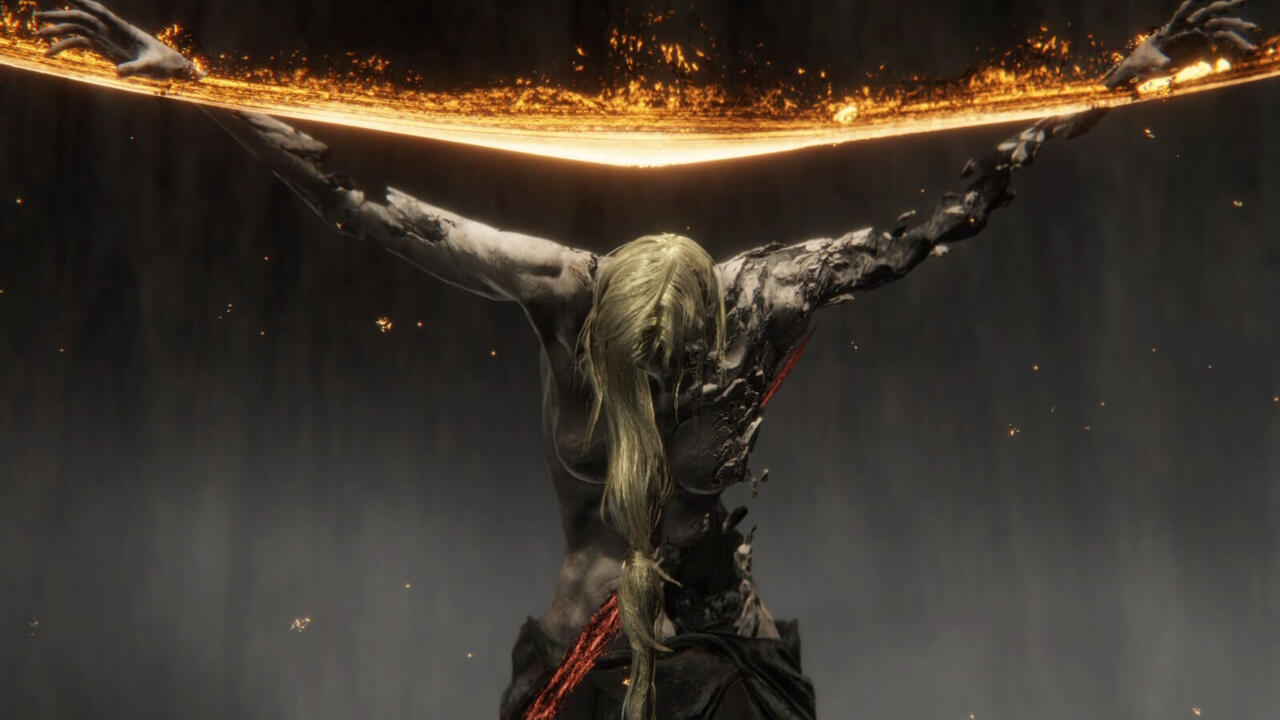
Though it's a bit confusing in context, this is actually a huge moment--although, like everything else, it's one that's not completely understood. If you work through the quest line for Brother Corhyn, a blind Tarnished Golden Order clergyman, and the Tarnished fundamentalist Goldmask, you might come across this revelation earlier in the game. Miriel, the Pastor of Vows who is a tortoise for some reason, gives you hints about this in Liurnia, telling you about a sculptor who was commissioned to create a statue of Radagon, and in so doing, discovered the "skeletons" in Radagon's closet and hid Radagon's secret in the statue. You can find that statue in Leyndell, and using a Golden Order incantation that Sir Gideon can give you, it's possible to reveal the truth--that Radagon and Marika are the same person.
We're not entirely sure if Marika and Radagon were always the same person, especially given Radagon's maybe-giant heritage and his previous relationship with Rennala. There are lots of thoughts on this point, and they differ greatly. Maybe Marika and Radagon started out as different people, and were merged together at some point. As we've discussed, it seems Marika's faith in the Greater Will and her own Golden Order started to wane at some point; meanwhile, Radagon was extremely dedicated to the faith, with Marika referring to him as the "leal hound of the Golden Order." So the Greater Will and the Two Fingers might have magically combined them as a way to keep control over their god, tempering Marika's diminishing faith with Radagon's fundamentalism.
Or maybe they were always two halves of the same person, sort of like split personalities. Radagon and Marika are pretty distinct in their ideas and motivations, and Radagon even headed off and started a family in Liurnia. We even get dialogue from Melina that quotes Marika as she speaks directly to Radagon. So under this interpretation, we can imagine that perhaps sometimes Marika was in charge of their godly body, and sometimes Radagon might be. While it seems some people found out about Radagon and Marika, like the sculptor, it was a secret that even people who spent time with the two characters wouldn't have known. That fact feels like a big check in the column of "separate people," even if they shared the same body. But it doesn't really take into account the implication that Radagon was a giant, and it's hard to square that circle in this interpretation.
It's also possible that "Radagon" was just another side of Marika, a disguise she put on that slowly became something more. Radagon started out as a Golden Order champion, and while we're told that Marika fought the Fell God, she didn't do a lot of her warring on her own--she sent people like Godfrey and Maliketh to do it for her. It's possible to see Marika kind of getting, well, bored of sitting around, waiting for other people to do things for her. Plus, her status as a god would have made her incredibly powerful (as we're about to find out). If Marika wanted to go out and mix it up in her own battles, one possible way to do so might be to hide her identity so that her enemies wouldn't know they had a shot at fighting the god-queen who was conquering them. Elden Ring has a huge running theme of major characters having alter-egos they use to hide their true identities or in specific situations; we just saw it with Godfrey/Hoarah Loux, and he's hardly the only example.
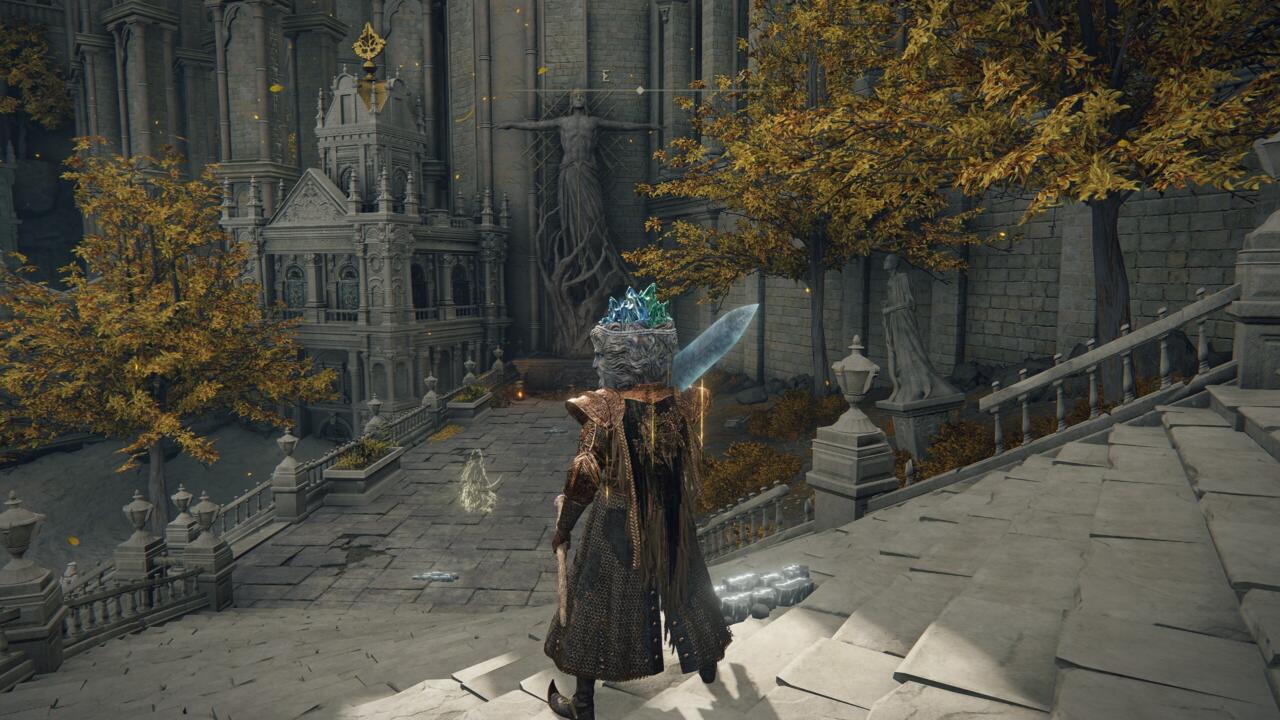
Over time, though, maybe the Radagon disguise started to take on a life of its own as Marika spent more and more time living Radagon's life--to paraphrase Nathaniel Hawthorne, Marika wore two faces for so long that she lost track of which was her true identity. Losing herself in the idea of being Radagon, she fell in love with Rennala and maybe started a slightly more simple existence in Caria, seeing what it would be like to stop fighting constant war and to raise a few children who wouldn't immediately be sent to the sewers.
Maybe Radagon's life in Caria was Marika imagining a different path for herself outside of godhood. That idea tracks with Radagon suddenly abandoning Rennala in Caria; if the Greater Will got wind of what was up, it probably wouldn't like it. Radagon abruptly heading back to Leyndell seems likely to have been the result of an outside force or request, rather than Radagon just one day deciding to bail.
Marika might now have another trick up her sleeve, because she could be her own Elden Lord, maintaining full control over the Lands Between without having to share power, as long as nobody figured out the ruse. But spending so much time splitting between these two identities, one loyal to the Golden Order and the other perhaps sick of her role and her rule, Marika and Radagon became separate enough that the god could no longer tell them apart or keep them unified. Under that interpretation, throughout the game, we've been seeing the aftermath of these two aspects of Marika's personality warring with each other. Radagon and Marika's Scarseals and Soreseals both describe the "solemn duty of those chosen by the gods" and how that duty can become a curse, and it's easy to see how Radagon and Marika are both shackled by duty, but in opposite ways. Again, though, we don't know how implications of Radagon's heritage factor into this idea, and it seems weird that people might not have noticed that Radagon and Marika are never in the same room at the same time together. None of these three interpretations seems like it gets to the whole truth, honestly, but then again, we're talking about gods and cosmic unknowable forces here. Maybe it'll never really "make sense."
There's a whole lot of stuff about Radagon and Marika and their relationship to their children, a lot of which has been covered extensively by various lore hounds. I particularly like both YouTubers BanditGames' and Mad Luigi's rundowns, which are extensive while offering some differing interpretations, but there are plenty of great lore rundowns on this and other subjects on YouTube.
So it's not exactly clear what "Marika is Radagon" precisely means. It appears they were two separate people, at least in some sense, but then again, maybe not. Regardless of exactly how the two people being the same person works, we do know that Miquella and Malenia were born of a single god. The fact that Marika and Radagon are the same person is also implied to have led to their kids' strange cursed status. And one wonders if the fact that Marika and Radagon's children were chosen to be Empyreans to replace her was a reaction to this situation--and one that might have driven Marika to do the things she did.
Though they're the same person, Marika and Radagon definitely seem to be polar opposites. Marika shattered the Elden Ring with her hammer, and Radagon tried unsuccessfully to use the hammer to repair it. As Vaatividya pointed out, we an also interpret that Radagon is the reason we couldn't get into the Erdtree in the first place--the thorns that closed off the entrance to the Erdtree make up the same symbol that's associated with Radagon all throughout the game, on his statues and his Soreseal and Scarseal.
It's Radagon who has worked to keep anyone from standing before the Elden Ring and replacing him as Elden Lord. But as mentioned, there's a lot of evidence that Marika has been behind the events of the game, engineering the situation that drew the Tarnished to the Lands Between in the first place. She broke the Elden Ring, bringing about the Shattering, as a purposeful act. She had ties to the assassins responsible for the Night of Black Knives, with lore related to Maliketh stating that she "betrayed" him, likely by allowing the Rune of Death to be stolen from him. She commissioned Hewg to make a weapon capable of slaying a god, which also suggests she might have created the Roundtable Hold to protect Tarnished on their quests to do just that. And she seems very likely to have been the mother of Melina, whose existence, it seems, was engineered to kindle the Flame of Ruin to burn the Erdtree.
Despite all these elements that Marika at least seems to have engineered, when you finally stand before her, it's Radagon you're forced to face. The leal hound of the Golden Order won't let you become Elden Lord, and attacks with the intention of destroying you. He uses a variety of holy attacks, leveraging his faith as a champion of the Golden Order.
Like everyone else, however, Radagon doesn't know who he's messing with, and he falls in battle against you. But that just reveals the true enemy: the embodiment of the Elden Ring, known as the Elden Beast.
Slaying a god, the Elden Beast
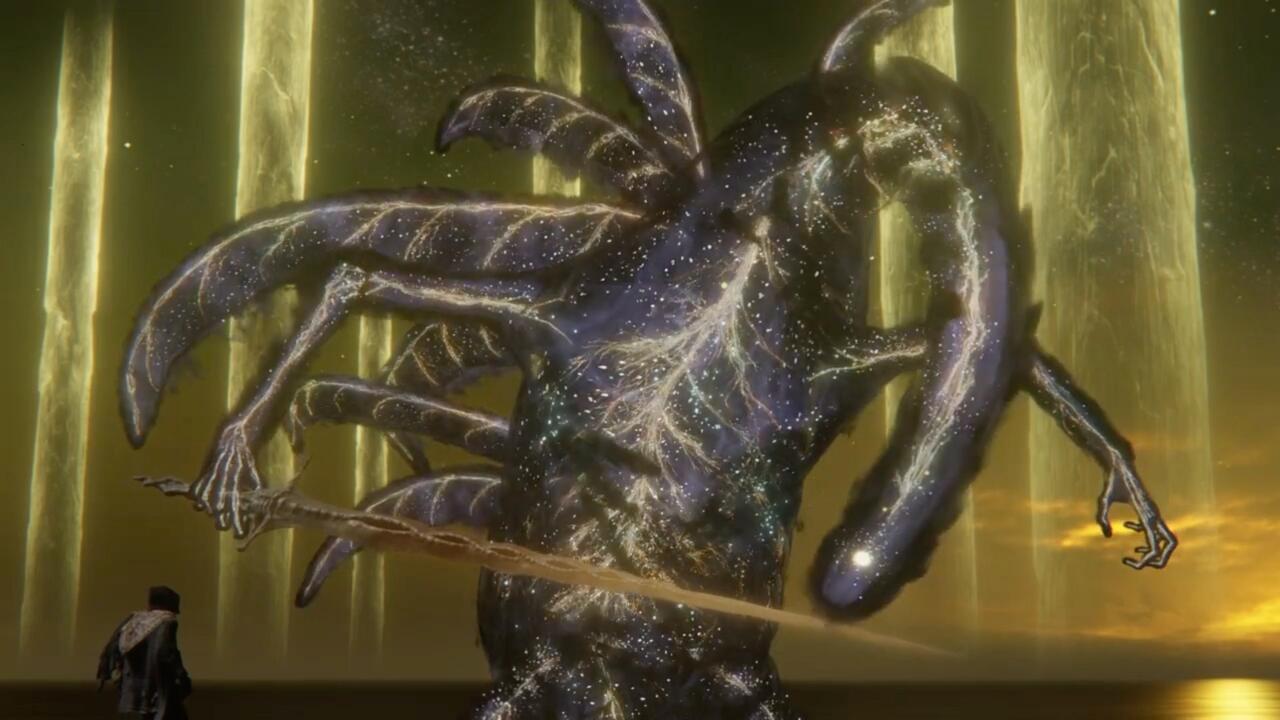
With Radagon defeated, the Elden Ring inside him takes control, forming into a huge, starry creature that reforges Radagon's body into a sword to use against you. The creature, the Elden Beast, looks like it's composed of some kind of golden energy wreathed in stars, using more holy abilities against you.
From the Elden Remembrance, which you earn for defeating the Elden Beast, we find out what exactly this thing is. The beast is a "vassal" of the Greater Will, the "living incarnation of the concept of Order." On the Elden Stars incantation, we get a little more context: "It is said that long ago, the Greater Will sent a golden star bearing a beast into the Lands Between, which would later become the Elden Ring." So the Elden Beast is the Elden Ring, and serves the Greater Will. Like Astel, Naturalborn of the Void, and other cosmic creatures, the Elden Beast was sent on a star to the Lands Between to enact the will of an Outer God.
As a side discussion, we might also consider the way the Elden Beast looks. Despite being kind of a big slug full of stars, it has the general shape of a dragon, with a long neck and wings on its back. Thus, we might speculate that this is the god to which Placidusax was consort, making the dragon Elden Lord. There's not a lot of information to go on for sure in this case, obviously--very little is said about the Elden Beast in the lore overall. But we do know that Placidusax's god "fled" Farum Azula, and there are a lot of murals and reliefs in the city referencing the early Erdtree or Great Tree, while also depicting the Elden Ring.
It's possible that this is how the timeline played out: The Greater Will sent the Elden Beast to the Lands Between, where it chose Placidusax as its consort and Elden Lord. When whatever happened to Farum Azula--an attack by another outer god, perhaps--happened, the Elden Beast abandoned the dragons and their Elden Lord. It sought a new home in the Erdtree, and then a new god to enact its will, joining with Marika as the Elden Ring. Again, we're making a few leaps over gaps in the lore, but it feels like this could have been how it all shook out. (Note: Apologies here, as I'm struggling to remember where I first heard the theory that the Elden Beast looks like a dragon and therefore could have been their god. If anybody knows who's theory that was originally, please let me know in the comments so I can update this article with some proper attribution. I'm sure it wasn't my idea.)
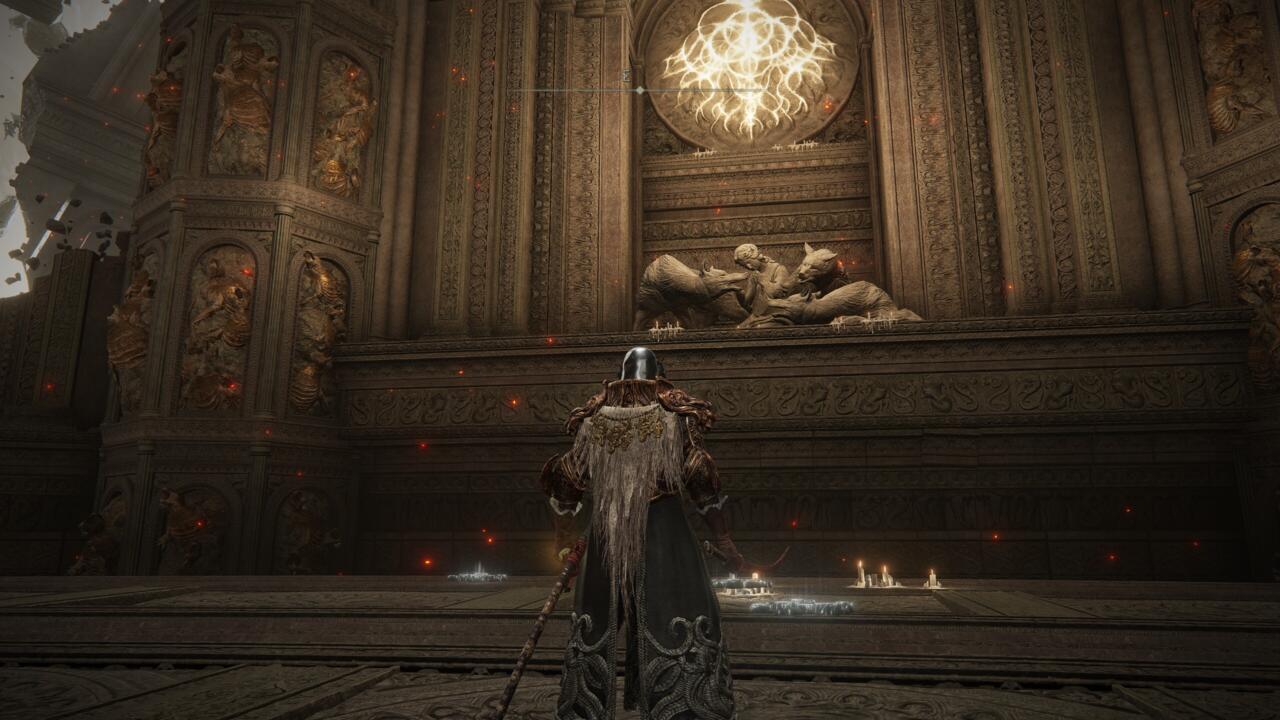
When you kill the Elden Beast, the message you see is "God slain." It's hard to say for sure, but this might be the god Marika was hoping to kill with a weapon forged by Hewg. If Marika found herself wishing to be free of the influence of the Greater Will, that seems like it would require her to be free of the Elden Beast, as well, since Marika is said to be the "vessel" for the Elden Ring. This is your ultimate confrontation with the Greater Will, and if you believe the theory that Marika engineered all of this, then this is the culmination of her plan.
As Marika might have hoped, you finally defeat the Elden Beast, slaying a god. At that moment, you can choose to repair the Elden Ring and become Elden Lord, beginning what will be known as the Age of Fracture. This ending seems to be a continuation of the status quo, accomplishing what the Greater Will hoped for by offering grace to the Tarnished; you mend the Elden Ring and restore order to the Lands Between, with a shattered and crumbly Marika seemingly still imprisoned. Although, then again, the Erdtree is on fire and everyone is dead, so maybe "status quo" isn't quite the right word for the world you will rule over.
Elden Ring has five other possible endings, however, each allowing you to remake the Elden Ring in a different way because of the runes you choose to place within it, and thereby bringing about different ages. Completing Fia's quest creates the Age of the Duskborn, when Those Who Live in Death will no longer be persecuted; work with Goldmask and Brother Corhyn, both fundamentalists, and you can help Goldmask bring about a purer, uncorrupted version of the Golden Order in the Age of Order. Meet the loathsome Dungeater and you can help him to curse the Lands Between, which is an awful outcome because he's an awful guy, but at least feels like something that'll help the Omen as a group. And then there's the bleakest of endings, in which you help the Frenzied Flame gain influence over the Lands Between, ousting the Greater Will's control.
Finally, you have the most involved ending, in which you work with Ranni to bring about her godhood and usher in the Age of Stars. The questline to get this ending takes quite a bit of extra work and seems like it's also meant to be the "best" ending--one in which Outer Gods no longer control the Lands Between, and the people there are free to make their own fate. Kind of. Maybe. It's all a little unclear. What will happen in the aftermath of each of the endings is, to some degree, up to your imagination.
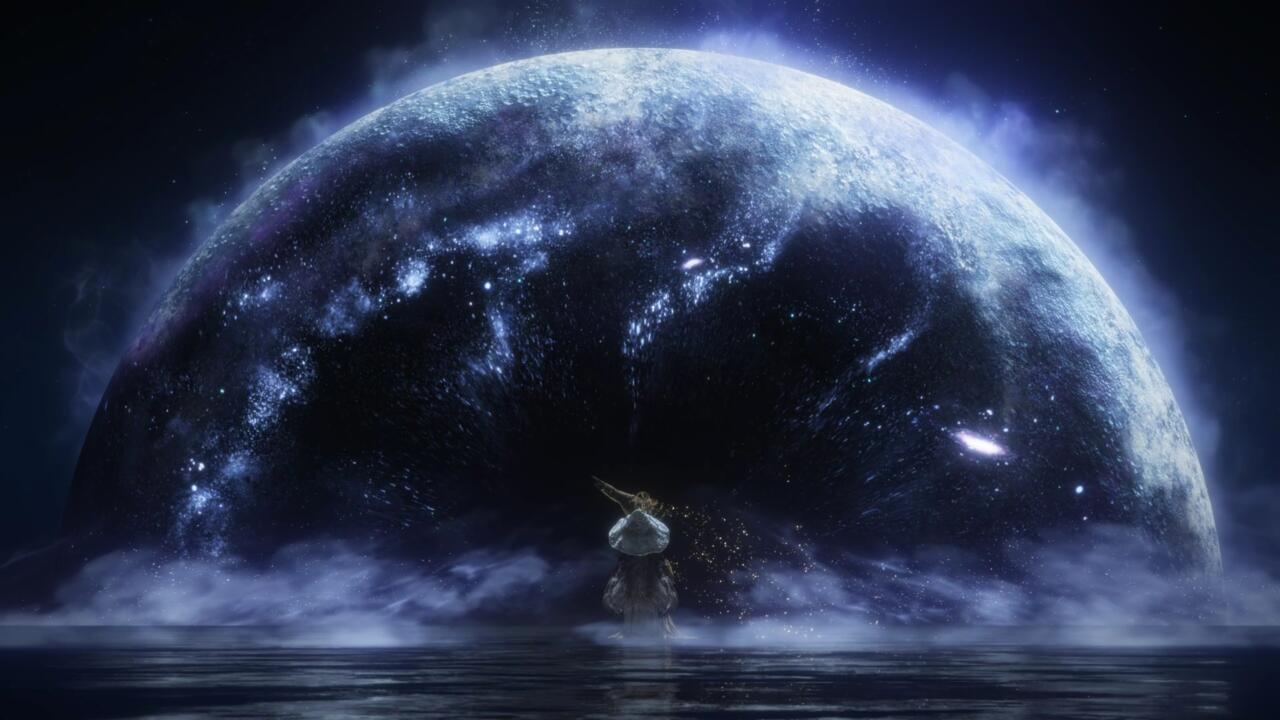
There are also a few hanging threads that might be addressed later, should Elden Ring receive downloadable content chapters similar to what we've seen in the Dark Souls games and Bloodborne. The question of Godwyn's influence on the Lands Between remains since he seems to be spreading like some kind of disease. The fate of Miquella is an open question as well, as Gideon pointed out--if he ever awakes, who knows what he might do. And while Marika and Radagon have been, it seems, transformed into nothing more than the vessel of the Elden Ring (and a cool sword you get from the Elden Beast), we still have a whole lot of questions about Marika's actions and motivations during the Shattering that could illuminate more of the future. And hey, what about that Gloam-Eyed Queen person?
Like just about everything in Elden Ring, we have no straight answers, and it's all open to interpretation. What we do know is that you killed a lot of very scary folks along the way to claiming your place as Elden Lord. Though we learned a lot about the past, it's an imperfect history--and the future remains unknown. At least, maybe, until Elden Ring 2.

